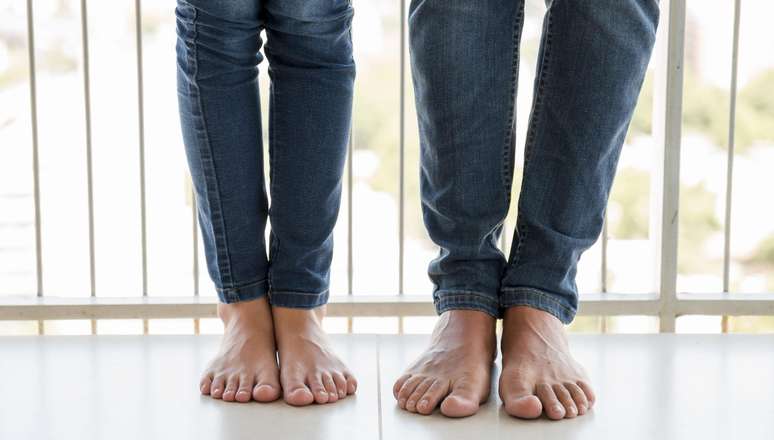These terms can be very confusing, but here we explain how to find out what your pace is!
Did you know that the way your feet touch the floor, that is, your type of trampling – can it cause body pain and even impair mobility?
For some people, structural differences cause the step to be too inward (pronation or overpronation) or outward (supination or underpronation), setting off a chain reaction of anatomical problems over time.
The good news is that there’s a simple solution that can help in both cases: the right pair of athletic shoes for each condition, combined with a proper strength training and stretching routine, will help keep your feet aligned. Below you can find everything you need to know about your foot type and how to find out what yours is!
What is overpronation and underpronation?
Let’s imagine a normal walk. You touch the ground with the middle of your heel and then “roll” your foot forward, distributing the weight on the long bones called metatarsals. Then, the foot moves forward slightly before pushing off the big toe.
Overpronation occurs when instability in the subtalar joint (where the heel and ankle bones meet) causes the foot to curve inward too much. A little bit of pronation – around 15% – is normal and essential, but if you exceed it you could run the risk of problems such as:
- Medial tibial stress syndrome (shin splints);
- Foot pain and disability;
- Hip, knee and back pain;
- Achilles tendinitis;
- Plantar fasciitis.
On the other hand, underpronation (or supination) occurs when the foot is placed too far outward, creating an abnormally high arch in the sole and putting pressure on the little toe. Too much supination can create problems including:
- Hallux valgus (bunions);
- Ankle sprains;
- Metatarsalgia (pain in the sole of the foot);
- Plantar fasciitis.
How to know if your feet are overpronated or underpronated
If any of the issues listed above look familiar, it’s a sign that your stride alignment may be off. To confirm this, it is best to consult a healthcare professional who can evaluate your feet and recommend a treatment plan. However, for a quick and easy test you can do at home, take a look at your shoes.
Consider whether the soles appear evenly worn or whether they are flatter or smoother on one side than the other. If you notice increased wear on the inside of the ball of your foot and big toe, you may have overpronated feet. If the outer edge of the foot, near the little toe, is flattened, the cause could be underpronation.
How often do you change your shoes?
Most shoes today have an insole and outsole made of synthetic materials. This makes them extremely effective at cushioning and absorbing shock on hard surfaces like roads, but can make them more vulnerable to daily wear and tear.
“A shoe can wear out a lot before it looks,” he warns Justin Greisberg, physician and head of orthopedic traumatology at New York-Presbyterian Westchester (USA). “If the insole appears changed by foot pressure, or if the outsole is completely worn out in some places, it may be time to purchase new shoes.”
What to do if you feel discomfort?
It is very common for underpronators and overpronators to experience pain in their feet, especially under the heel. Furthermore, even a small misalignment can have consequences on the entire body, with possible further pain in the knees, hips and back due to incorrect support.
“[A dor] It can be a sign that your current shoes have lost support, and sometimes a new pair can be enough to alleviate the problem,” says Greisberg.
According to the doctor, in the short term, a supportive footbed can help. But if discomfort persists, don’t hesitate to see a healthcare professional for a more thorough evaluation and comprehensive treatment plan.
Source: Terra
Ben Stock is a lifestyle journalist and author at Gossipify. He writes about topics such as health, wellness, travel, food and home decor. He provides practical advice and inspiration to improve well-being, keeps readers up to date with latest lifestyle news and trends, known for his engaging writing style, in-depth analysis and unique perspectives.








